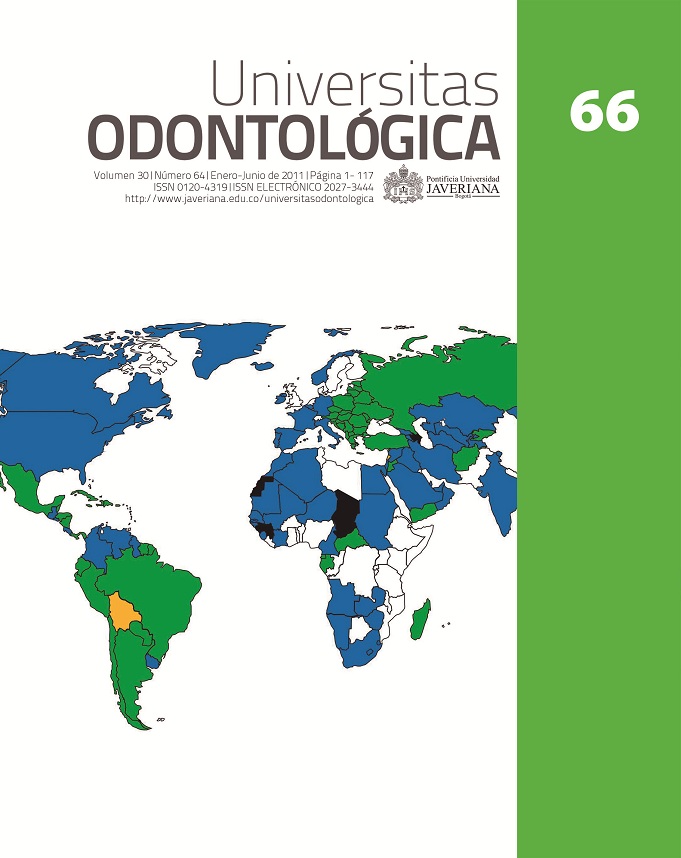Abstract
El objetivo del artículo es realizar un análisis histórico y desde los estudios sociales de la ciencia sobre cómo se construyó la representación de las tendencias epidemiológicas de caries en el mundo y el papel que desempeñan los mapas en dicha representación. Concluye con una descripción de los mapas epidemiológicos acerca de caries dental que ha producido la Organización Mundial de la Salud, descripción que contrasta con el discurso que acompaña dicha representación.
The purpose of this paper is to analyze, from historical and sociology of science standpoints, the development of representations of epidemiological trends of dental caries worldwide with a specific focus on the use of maps. It concludes with a description of the epidemiological maps of caries that have been published by World Health Organization and an analysis of the discourse that goes along with those representations.
This journal is registered under a Creative Commons Attribution 4.0 International Public License. Thus, this work may be reproduced, distributed, and publicly shared in digital format, as long as the names of the authors and Pontificia Universidad Javeriana are acknowledged. Others are allowed to quote, adapt, transform, auto-archive, republish, and create based on this material, for any purpose (even commercial ones), provided the authorship is duly acknowledged, a link to the original work is provided, and it is specified if changes have been made. Pontificia Universidad Javeriana does not hold the rights of published works and the authors are solely responsible for the contents of their works; they keep the moral, intellectual, privacy, and publicity rights.
Approving the intervention of the work (review, copy-editing, translation, layout) and the following outreach, are granted through an use license and not through an assignment of rights. This means the journal and Pontificia Universidad Javeriana cannot be held responsible for any ethical malpractice by the authors. As a consequence of the protection granted by the use license, the journal is not required to publish recantations or modify information already published, unless the errata stems from the editorial management process. Publishing contents in this journal does not generate royalties for contributors.


